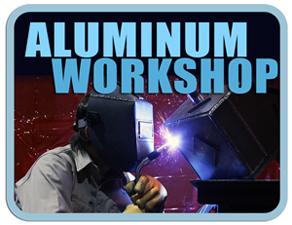President
- FMA
- The Fabricator
- FABTECH
- Canadian Metalworking
Categories
- Additive Manufacturing
- Aluminum Welding
- Arc Welding
- Assembly and Joining
- Automation and Robotics
- Bending and Forming
- Consumables
- Cutting and Weld Prep
- Electric Vehicles
- En Español
- Finishing
- Hydroforming
- Laser Cutting
- Laser Welding
- Machining
- Manufacturing Software
- Materials Handling
- Metals/Materials
- Oxyfuel Cutting
- Plasma Cutting
- Power Tools
- Punching and Other Holemaking
- Roll Forming
- Safety
- Sawing
- Shearing
- Shop Management
- Testing and Measuring
- Tube and Pipe Fabrication
- Tube and Pipe Production
- Waterjet Cutting
Industry Directory
Webcasts
Podcasts
FAB 40
Advertise
Subscribe
Account Login
Search
Aluminum Workshop: Explaining the causes of black smoke
- By Frank Armao
- November 25, 2014
- Article
- Aluminum Welding
Q: I get a lot of black smoke on the surface of my aluminum welds. What is it, and how can I get rid of it?
A: I can tell you what the black smoke isn’t. It is not soot and it doesn’t contain carbon, as most people think. It is, in fact, a mixture of very fine particles of aluminum oxide and magnesium oxide (I am assuming you are using a 5XXX filler such as 5356).
The boiling points of both aluminum and magnesium are much lower than the temperatures encountered in a welding arc, so quite a lot of aluminum and magnesium evaporate into the arc and then cool and condense at the arc’s outer edges. If they do so within the inert shielding gas blanket, they are then incorporated into the weld. If they travel outside the inert shielding gas blanket, they immediately oxidize into aluminum or magnesium oxide and condense on the cooler weld surface.
The presence of large quantities of black smut indicates there is a problem with the shielding gas blanket. You will always get a small quantity of smut at the edges of the weld, if you’re using gas metal arc welding (GMAW) because you are actually transferring metal across the arc or if you are using a 5XXX filler alloy, which contains magnesium that oxidizes more readily. Always remember that the weld itself should appear bright and shiny. If it is black, you may need to check the following:
- Shielding gas flow rate. Use at least 20 SCFH for gas tungsten arc welding (GTAW) and 35 SCFH for GMAW.
- Torch angle. Always use a push angle; never drag the torch.
- The gas nozzle-to-work distance. Try to keep it between 0.5 and 0.75 in.
- Welding environment. If you can feel a breeze, it’s probably blowing the shielding gas away. Put up shields, turn off fans, and close doors.
About the Author

Frank Armao
Aluminum Consulting Inc.
440-479-0239
About the Publication
Related Companies
subscribe now

The Welder, formerly known as Practical Welding Today, is a showcase of the real people who make the products we use and work with every day. This magazine has served the welding community in North America well for more than 20 years.
start your free subscription- Stay connected from anywhere

Easily access valuable industry resources now with full access to the digital edition of The Fabricator.

Easily access valuable industry resources now with full access to the digital edition of The Welder.

Easily access valuable industry resources now with full access to the digital edition of The Tube and Pipe Journal.
- Podcasting
- Podcast:
- The Fabricator Podcast
- Published:
- 04/16/2024
- Running Time:
- 63:29
In this episode of The Fabricator Podcast, Caleb Chamberlain, co-founder and CEO of OSH Cut, discusses his company’s...
- Trending Articles
Sheffield Forgemasters makes global leap in welding technology

Welding student from Utah to represent the U.S. at WorldSkills 2024

Lincoln Electric announces executive appointments

Lincoln Electric acquires RedViking

Engine-driven welding machines include integrated air compressors

- Industry Events
16th Annual Safety Conference
- April 30 - May 1, 2024
- Elgin,
Pipe and Tube Conference
- May 21 - 22, 2024
- Omaha, NE
World-Class Roll Forming Workshop
- June 5 - 6, 2024
- Louisville, KY
Advanced Laser Application Workshop
- June 25 - 27, 2024
- Novi, MI



























